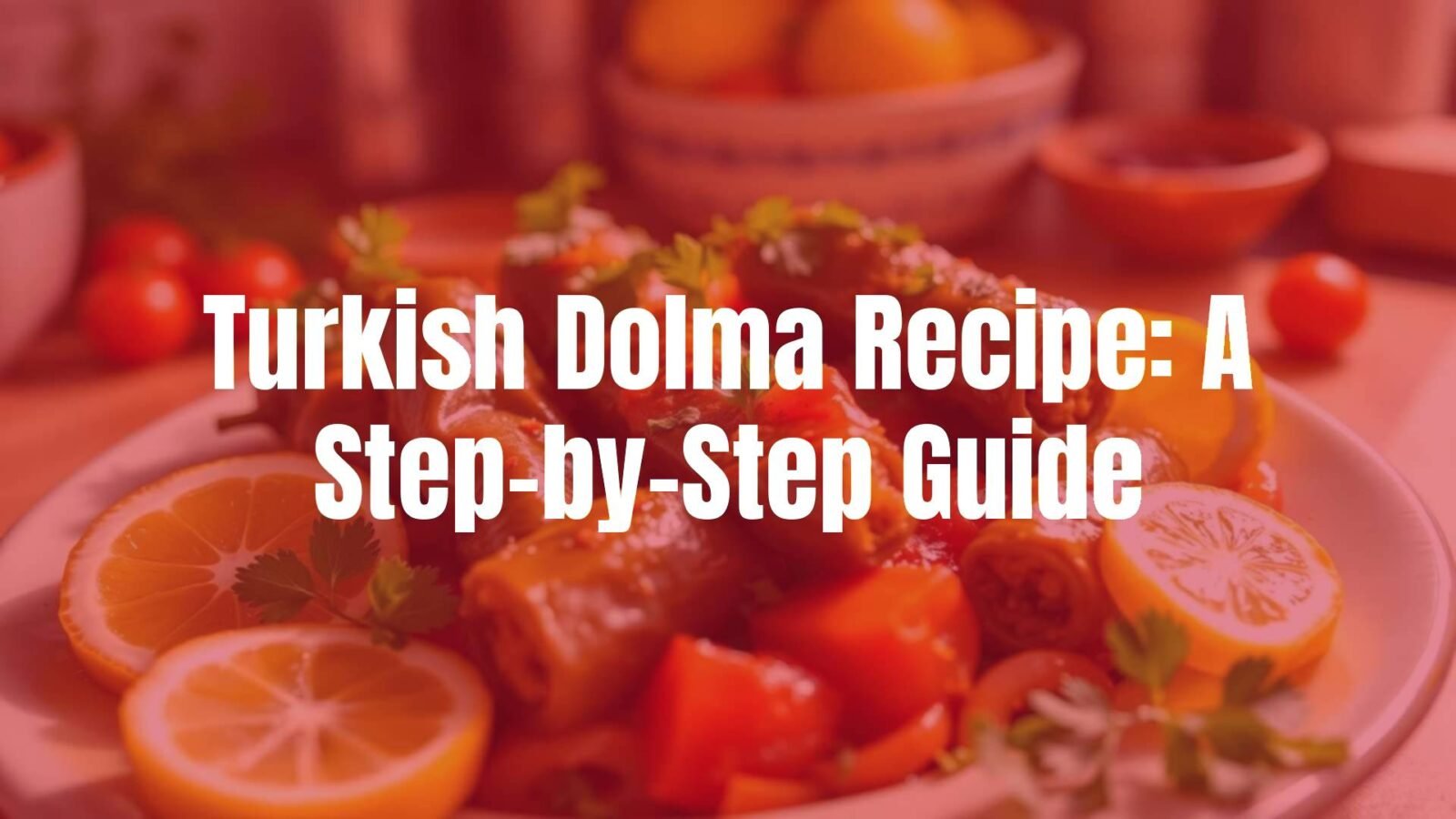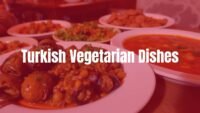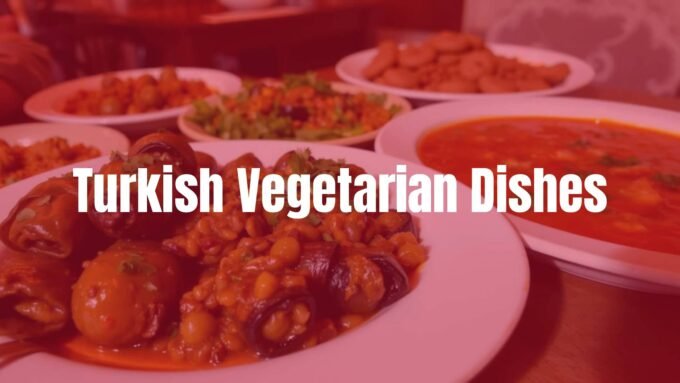Want a taste of Turkey at home? You’re in the right place. Turkish dolma is a family of dishes where vegetables or leaves are filled with a tasty mix, often rice-based. It is a dish with deep roots, shared at family tables for generations. Whether you cook often or you’re just starting, learning a Turkish dolma recipe brings you into a kitchen full of warm spices, tender fillings, and the welcoming spirit of Mediterranean cooking.
From meat-stuffed peppers to vegetarian grape leaves, dolma comes in many styles. This guide explains how to make classic Turkish dolma, where it comes from, how its types differ, and gives you a clear, step-by-step recipe. Roll up your sleeves, gather your ingredients, and get ready to make a plate that smells amazing and tastes even better.

What Is Turkish Dolma?
“Dolma” in Turkish means “stuffed.” It covers many dishes where vegetables or leaves hold a filling. It shows how Turkish cooking turns simple ingredients into something special. People across the Middle East have made stuffed dishes since medieval times, so dolma has a long history and has been enjoyed by people from all walks of life for centuries.
Dolma is very flexible. The idea is simple-flavorful filling inside a natural wrapper-but ingredients and methods can change by region and by household. It is a comfort food you will find often in Turkish homes.
Origin and History of Dolma in Turkey
Dolma is closely linked to the cooking traditions of the Ottoman Empire. While many nearby cuisines share stuffed dishes, the word “dolma” comes from the Turkish verb “dolmak,” meaning “to fill.” This points to Turkey as a key home for this style of cooking.
Stuffed vegetables have been part of Middle Eastern food for centuries. As the Ottoman Empire grew, dolma spread to many lands it ruled. Today, it remains popular in those regions. In Turkey, many families keep dolma in the fridge in summer for quick snacks, showing how well it fits daily life.
Dolma vs Sarma: What Makes Them Different?
People often mix these up. In Turkey, “dolma” means vegetables that are hollowed and filled, like peppers, tomatoes, or zucchini. The verb “dolmak” means “to fill.”
“Sarma” means dishes where a filling is rolled in leaves, like grape or cabbage leaves. “Sarmak” means “to wrap.” So, stuffed bell peppers are “biber dolması,” while stuffed grape leaves are “yaprak sarma.” Some people still use “dolma” for both, especially if a pot has a mix of stuffed vegetables and rolled leaves. If you want to be exact, remember: dolma is “filled,” sarma is “wrapped.”
| Term | Wrapper | Examples |
|---|---|---|
| Dolma | Hollowed vegetables | Peppers, tomatoes, zucchini, eggplant |
| Sarma | Leaves (rolled) | Grape leaves, cabbage leaves |
Types of Turkish Dolma
Dolma in Turkey is wide-ranging. If you can stuff it, it can be dolma. Grape leaves (yaprak) are famous, but many vegetables are used:
- Green “dolma” peppers (thinner than bell peppers)
- Tomatoes
- Zucchini (kabak)
- Eggplants
- Dried vegetables in the east (dried eggplant, tomato, or hot peppers)
In Eastern Turkey, dried vegetables are soaked and filled, often with bulgur and pomegranate molasses. In Western Turkey, fillings are usually rice-based with olive oil, dill, currants, and pine nuts, and these are often served cold.
There are also special types like “midye dolma” (stuffed mussels). Fillings range from meat-and-rice mixes to meat-free options with herbs, spices, and sometimes currants. Every region and home has its own way, which keeps dolma interesting and varied.
Ingredients for Traditional Turkish Dolma
Good dolma starts with good ingredients. Freshness and quality matter for both flavor and texture. While recipes vary by region, most share a core set of items.
From rice and onions to herbs and spices, each item plays its part in creating the comforting taste Turkish dolma is known for. Knowing these basics helps you build a great dish.
Essential Ingredients
The filling usually centers on rice. Short or medium-grain rice is common because it soaks up flavor and holds together well. Onions are key and often cooked in olive oil until soft. Fresh herbs add brightness; parsley and mint are most common, with dill or basil sometimes added.
Spices bring the flavor together. Allspice, black pepper, and cinnamon are common in meat fillings. For meat-free versions, dried mint, sumac, and a small amount of sugar or currants can add balance. Tomato paste adds depth and color, lemon juice adds sharpness, and olive oil goes into both filling and cooking liquid, especially for olive oil dolma served cold.
Choosing Between Meat and Vegetarian Fillings
You can make dolma with meat or without. Both are classic. Meat dolma often uses ground beef or lamb with uncooked rice, onions, garlic, tomato paste, pul biber (Aleppo pepper), paprika, and allspice. These are usually served warm and can be a full meal.
Vegetarian dolma, called “yalancı dolma” (“liar’s dolma,” because it has no meat), uses rice, herbs like parsley and mint, onions, pine nuts, and currants, and plenty of olive oil. These are usually served cold or at room temperature and work well as part of a meze spread. Pick based on taste or occasion-both styles are loved in Turkey.
Selecting the Best Grape Leaves or Vegetables
The wrapper matters. For grape leaves (yaprak), you want leaves that are soft and flexible. Fresh leaves from spring or early summer are best and need a quick blanch in boiling water. If using jarred leaves, rinse very well to remove extra brine so your dolma doesn’t turn too salty. Many cooks like sultana grape leaves for size and shape.
For vegetables, peppers, tomatoes, zucchini, and dried eggplants are all great. Choose firm, evenly sized pieces so they cook at the same rate. For peppers, square bases help them sit upright in the pot. If mixing vegetables, think about their shape and cooking time so everything finishes together.
Step-by-Step Turkish Dolma Recipe
Now let’s make dolma. The steps are simple and rewarding: prepare the wrappers, mix the filling, stuff, and cook gently until tender.
Both meat and meat-free versions follow the same main steps. Careful prep and slow cooking give the best results.
Preparing the Vegetables or Grape Leaves
For fresh grape leaves: wash, then blanch in boiling water for 1-2 minutes until soft and bendy. Move to cold water, then drain. For jarred leaves: rinse very well under cold water to wash off extra salt. Drain and trim any stems close to the leaf.
For vegetables: cut off the top of peppers or tomatoes (keep the lids if you like), remove cores and seeds. For tomatoes, scoop out the pulp; you can chop it and add to the cooking liquid. For zucchini or eggplant, cut into 2.5-3 inch pieces, then hollow out with a small spoon, leaving about 1/4 inch of flesh on the sides and bottom. Try to use similar sizes for even cooking.
Making the Filling
The filling should be moist and flavorful. Short or medium-grain rice works well. Rinse the rice under cold water and drain. Some cooks par-cook the rice a little so it softens during braising without drying the mix.
Meat Filling for Dolma
Mix uncooked rice with ground meat (beef, lamb, or both). Add finely chopped onions and garlic. Stir in tomato paste and, if you like, a little red pepper paste. Season with pul biber, sweet paprika, allspice, salt, and black pepper. Fresh parsley and dill add freshness. Some add a pinch of baking soda to keep the meat tender. Mix well. The meat cooks in the pot and soaks up flavor from the liquid.
Vegetarian (Yalancı) Dolma Filling
This filling highlights herbs, gentle sweetness, and lemon. Use short or medium-grain rice, finely chopped onions, plenty of parsley and mint, pine nuts for crunch, and currants for small sweet notes.
Lemon juice or lemon salt brings a bright taste. Common spices are dried mint, allspice, cinnamon, and a little sugar. Often, onions are sautéed in olive oil, then rice and a bit of tomato paste go in with some water to partially cook the rice. After it cools a bit, add herbs, currants, and pine nuts. This version is usually served cool with extra olive oil.
How to Stuff and Roll Dolma
For grape leaves: lay a leaf shiny side down with the stem end facing you. Place 1 teaspoon to 1 tablespoon of filling near the stem end in a thin line. Rice expands, so do not overfill. Fold the bottom up over the filling, fold sides in, then roll up to the tip. Roll firmly but not too tight so the rice has room to swell. Some people use simple rolling tools to speed this up.
For vegetables: spoon filling into the cavities. Leave 1/4 inch to 1 inch of space at the top for rice to expand. Put the saved pepper or tomato tops back on if you like. Arrange stuffed vegetables in the pot.

Cooking Turkish Dolma
Line the bottom of a wide pot or Dutch oven with torn or extra grape leaves, or a few potato slices or lamb ribs to stop sticking. Place stuffed dolma close together in neat rows or circles. For rolled leaves, place seam-side down so they don’t open.
Mix your cooking liquid. For olive oil dolma, use water, olive oil, and lemon juice. For meat dolma, stir tomato paste into hot water with salt and pepper. Pour over the dolma until almost covered. Set a heat-proof plate on top to keep them from floating.
Bring to a boil, lower the heat, cover, and simmer gently. Cook 45-60 minutes or until rice is soft and wrappers are tender. Check the liquid now and then and add a bit of hot water if needed. Take off the heat and let rest, covered, for about 20 minutes. Serve meat versions warm; serve olive oil versions warm or at room temperature.
Best Practices and Tips for Perfect Dolma
Dolma gets better with a few simple habits and smart choices. These tips help you avoid common issues and give steady results each time you cook.
From rice choice to storage, use these ideas to make dolma that tastes great and holds its shape.
Common Mistakes and How to Avoid Them
Overfilling is the most common issue. Rice swells a lot during cooking, so use less filling than you think. Leave space at the top of vegetables, and roll grape leaves snugly but not tight. Rolls that are too loose can open in the pot; ones that are too tight can split.
Another problem is tough grape leaves. Pick fresh spring leaves and blanch well, or use a good brand of jarred leaves and rinse off the brine carefully so your dish doesn’t turn too salty. Some recipes call for a lot of lemon salt; many cooks prefer about 2 teaspoons, or use kosher salt plus fresh lemon juice instead.
For even cooking, pack dolma closely in the pot and weigh them down with a plate. Keep the heat low for a gentle simmer. High heat can burn the bottom or leave the rice underdone. Watch the liquid level and add more water if needed.
Recommended Rice and Spices for Dolma
Short or medium-grain rice works best. In Turkey, Baldo rice is popular because it absorbs liquid well and turns tender without getting mushy. If you can’t find Baldo, use another short-grain or a good medium-grain rice. Some use basmati, but the texture will be a bit different. Add the rice uncooked to the filling so it cooks with steam and braising liquid.
Spice blends vary by region and by filling. Common choices are allspice, black pepper, and cinnamon for warm aroma. Dried mint is key for meat-free dolma and adds a clean, herb note. Sumac brings a lemony tang. For meat fillings, pul biber and sweet paprika add gentle heat and color. Lemon salt gives a special citrus taste; if you don’t have it, mix regular salt with fresh lemon juice.
How to Store and Reheat Turkish Dolma
Dolma often tastes even better the next day. It’s great for make-ahead meals and parties.
Let cooked dolma cool, then put in an airtight container and refrigerate for 3-5 days. You can freeze both cooked and uncooked dolma. To freeze uncooked dolma, place them on a tray until solid, then move to a freezer-safe bag or container; keep for up to 5 months. Cooked dolma can be frozen for up to 3 months. Thaw in the fridge overnight.
To reheat, put dolma in a pan with a little water or broth. Cover and warm over low to medium-low heat for 10-15 minutes. This gentle method keeps them moist. Avoid the microwave if you can, as it can dry them out. Olive oil dolma are often served cold or at room temperature, so you might not need to reheat.
Serving Suggestions for Turkish Dolma
Dolma shines with the right sides and sauces. The right pairing makes the meal feel complete. Cool dairy, crisp salads, and simple breads all work well.
Serve dolma as a snack, part of a meze spread, or as a main course. These pairings help balance the rich, savory flavors.
Popular Side Dishes and Sauces
Plain thick yogurt is the classic side. Its cool, tangy taste balances warm, savory dolma. Mint yogurt sauce or Turkish cacık (yogurt with cucumber and garlic) adds more herb flavor.
For olive oil dolma, drizzle extra virgin olive oil and squeeze fresh lemon before serving. A simple garlicky tomato sauce poured over the top is another nice option. Add a fresh salad, like Turkish Shepherd’s Salad (Çoban Salatası) with tomatoes, cucumbers, and peppers dressed in olive oil and lemon. Warm pita or flatbread is great for soaking up juices. If the weather allows, start with a small bowl of soup.
How to Serve Dolma as Part of a Turkish Meze
Dolma is a key part of a Turkish meze table. Meat-free grape leaf dolma are usually served cold or at room temperature. Their bright taste makes them a good starter.
Arrange dolma on a platter and garnish with parsley or lemon wedges. Offer small bowls of plain yogurt, mint yogurt, or a spicy red pepper dip. Other meze that match well include kisir (bulgur salad), roasted eggplant with tahini, and mixed salads. Plan about half to one dolma per person in a meze spread so guests can sample many dishes.
Frequently Asked Questions about Turkish Dolma
Dolma often brings up the same questions. Here are clear answers to help you cook with confidence and enjoy every bite.
These tips remove guesswork and help you make choices that lead to good results every time.
Can You Freeze Turkish Dolma?
Yes. Dolma freezes well, cooked or uncooked. You can also freeze leftover filling.
For uncooked dolma, freeze them on a tray until firm, then move to a freezer-safe bag or box so they don’t stick together. Keep up to 5 months. Cook from frozen with a little extra time, or thaw in the fridge first. For cooked dolma, cool fully, pack in an airtight container, and freeze up to 3 months. Thaw in the fridge, then reheat gently on the stove with a splash of water or broth.
What Is the Best Rice for Dolma Filling?
Short or medium-grain rice is best. In Turkey, Baldo is a favorite because it soaks up liquid and flavor and turns tender without falling apart. Its slight stickiness helps the filling hold together.
If you can’t find Baldo, use another short-grain or a good medium-grain rice. Basmati can work but gives a different texture. Always rinse the rice under cold water to remove extra starch before using.
Are Preserved or Fresh Grape Leaves Better?
Both work well. Fresh leaves from spring or early summer are tender and taste delicate, but they need blanching before rolling. Many people like their fresh flavor.
Jarred grape leaves are easy to find and save time. Rinse them very well to remove brine so your dolma doesn’t get too salty. Good jarred leaves can give excellent results, and they make dolma possible year-round. The key is to use leaves that are soft, flexible, and not too veiny, so they roll without tearing and cook tender.
















Leave a comment